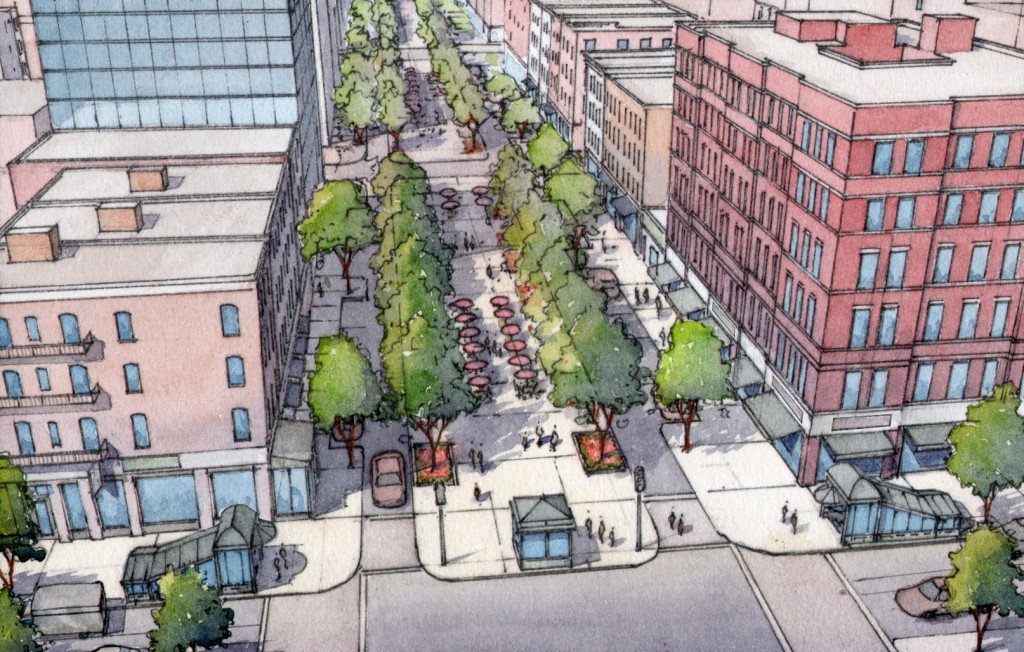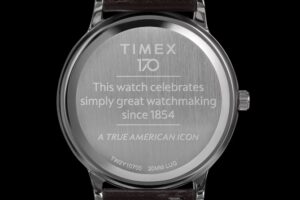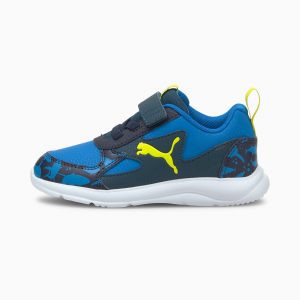A Ultimate Guide to Urban Street design

Streets make up more than 80 per cent of public space in urban conglomerations. Yet they still fail to present themselves as safe transit areas for people and bicycles, places for people to socialize and create an efficient interim between a building and a vehicular roadway.
To place the safety of pedestrians and the concept of public space over the movement of vehicles, more and more cities are making an effort to redesign and reinvent their streets. Urban street design has played a crucial role in creating 21st-century streets that are universally accessible, economically vibrant, safe and more livable.
Also Read:- HDR Architectural Firm- 15 Iconic Projects
What is a Street?
Urban Street Design recognizes that the urban street is in fact, a complex phenomenon that is miles away from being a road, two terms that are often interchanged in the modern setting.
A “road” is a two-dimensional way that connects places with the main motivation of moving vehicles across the city or town in a planned fashion. Roads are usually smooth, paved surfaces and can consist of multiple lanes to ease vehicular congestion. Since pedestrian movement can be restricted and difficult on roads that are often occupied by fast-moving traffic, they are attached to sidewalks or footpaths.
A “street” on the other hand, is a primary unit of urban public space through which people can watch and experience a city. Streets span from one property line to another and include setbacks, sidewalks, roadways, parking spaces, cycling paths and landscaping. They facilitate a variety of activities and functions. Streets allow for lateral movement as well interim movement between two other destinations. They are dynamic urban spaces that evolve to integrate environmental sustainability, public health, cultural facets and economic activity into the growing urban realm.
Designing the Urban Street
Urban Street Design aims to create safer public spaces in the city that allow for equitable allocation of space across all stakeholders. It provides a mechanism to reinstate the street as a dominant facet of the urban realm. To efficiently execute urban street design, one must be familiar with the different components that are involved in this lexicon.
Streets are composed of different elements. Some of them can adapt to the growing needs of the city,- like parking spaces, landscaping, transit stops. Others are pre-dictated to facilitate ease of function,- like sidewalks, bike lanes and roads. The interplay between both kinds of street elements allows one to create dynamic urban public spaces.
Components of Urban Streets: Street and Safety Elements, Utility Zones
1. Lane Width
The width that is allocated to moving vehicles, as well as parked vehicles, forms a sensitive aspect of street design. It dictates the density and passage of vehicles. Lane width should be designed keeping in mind the size of vehicles and space available to incorporate all other needs.
2. Sidewalk/Footpath
Sidewalks act as conduits of pedestrian movement and access. They promote walking and facilitate connectivity. An efficiently designed sidewalk boosts social interaction and a healthy urban community.
- Frontage Zone: This zone acts as an extension of the building and contains the space that is immediately adjacent to it. It allows user entry and exit and also contains boards, sidewalk cafes and the building facade.
- Pedestrian Through Zone: This zone is directly parallel to the street and allows direct and uninterrupted movement of pedestrians.
- Street Furniture Zone: This zone incorporates street furniture like benches, street lights, kiosks, bicycle parking, tree pits and utility poles.
- Enhancement Zone: This zone is adjacent to the road and consists of curb extensions, stormwater management features and bicycle tracks.
3. Curb Extensions
These are extensions of the roadway that create safer and shorter crossings for pedestrians while increasing the designated space for street furniture and trees.
- Gateway: They increase the visibility of pedestrians by aligning them with the parking space and reduce the crossing distance.
- Pinch-point: These are located in the middle of a lateral street and are used to slow down traffic and increase public space. They also facilitate mid-street pedestrian crossings.
- Chicane: Chicanes are offset curb extensions that considerably reduce traffic speed. They also provide ample space that can be used for public amenities.
- Bus Bulbs: These align the bus stops with the parking lane and prevent buses from having to shift lanes to pick up or drop passengers. They enhance the overall transit user experience.
4. Transit Lanes
Dedicated transit lanes for buses/cycles allow for seamless movement of transit vehicles that are aligned with public transportation schedules and prevent traffic congestion.
5. Parking Areas
Designated on-street parking areas prevent sidewalk encroachment, road blockage and congestion. Parking lanes facilitate ease of access to buildings and can be further amplified with efficient curb extensions.
6. Pedestrian Crossings
Pedestrian crossings boost safety by limiting jaywalking. Efficient crossings cover the minimum distance between sidewalks and are provided at intersections, flyovers and underpasses.
7. Speed Control Elements
Vertical speed control elements control vehicle speeds and reinforce pedestrian-friendly movement. Based on their size and shape, these elements can be further classified into:
- Speed Humps
- Speed Tables
- Speed Cushions
8. Medians
Central medians are elevated barriers or dividers that separate the street and ease traffic flow. They streamline the movement and avoid interaction between vehicles moving in different directions.
9. Bollards
Bollards are entry restricting elements that prevent vehicles from entering pedestrian spaces. They help distinguish designated movement spaces and safeguard cyclists and pedestrians.
10. Street Furniture
Street furniture is a broad term encompassing street lights, seating arrangements, tree pits, bicycle parking areas, garbage bins and utility poles.
Street lighting is essential in creating safe, accessible streets. They ensure inter-visibility between users and demarcate pathways. They also significantly improve the aesthetics of the streetscape.
Efficient allocation of street furniture improves the universal accessibility of the street and creates community interaction.
11. Signage
Traffic signs such as mandatory signs, warning signs and informatory signs allow street users to be informed and prepared.
Road markings on the sides, centre or diagrams highlight demarcation of space and notify users of the function of an area.
12. Plantation
Trees on streets provide shade, reduce local ambient heat, improve air quality, reduce surface water run-off and are aesthetically pleasing.
13. Storm Water Drainage
Stormwater management features treat and slow run-off from impervious surfaces such as sidewalks and roadways. They dictate the flow of water in the urban setting.
14. Public Restrooms
Access to public restrooms is a fundamental aspect of community development. Clean, universally accessible restrooms are extremely important in urban street design.
15. Garbage Disposal
Cleaner and healthier streets help create an environmentally conscious and hygienic community. Garbage bins are to be placed at frequent intervals to maintain cleanliness.
16. Utilities and Services
Streets carry several utility and service features including electricity supply, sewerage, water supply, telecommunication lines, cable TV wires, CCTV cameras and traffic signals. These services should be designed in a way as to not hamper pedestrian movement on the street.
Urban Street Design can help reimagine cities into more holistic spaces, to catch up with the evolving needs of cities and implement sustainability. An efficient street is not only an efficient public space but is also a haven for community growth and socializing. Creating inclusive urban spaces is, after all, the hallmark of modern design.







